 Mitsubishi J2M 'Raiden' Mitsubishi J2M 'Raiden'
The Mitsubishi J2M Raiden ('Thunderbolt')(Allied codename: 'Jack') was a land-based interceptor that emphasised performance and pilot protection rather than manoeuvrability. Although designed to a 1939 requirement, at a time when Japanese war leaders were reluctant to develop a home defence fighter, the Mitsubishi J2M Raiden only came into its own while defending the Japanese homeland against American B-29 daylight raids in the last two years of the war.
Develoment
Work on the J2M actually began in October 1938, when Mitsubishi and the Japanese Navy began to discuss the idea of producing a land-based interceptor to work alongside the more manoeuvrable carrier-borne fighters. At this time Mitsubishi were developing the A6M 'Zero', and so work on the new concept was slow. Its official 14-Shi specification didn't appear until September 1939, and the first prototype wasn't ready until 1942. The Japanese navy's emphasis upon speed and climb rate, rather than its customary demands for range and manoeuvrability, prompted the designer Jiro Hinkoshi to adopt a squat single- engine design with long-chord radial engine cowling, laminar-flow wings and high-raked, curved windscreen. First flight of the prototype J2M1 took place on 20 March 1942, but the aircraft soon attracted criticism from navy pilots on numerous counts, not least that the view from the cockpit was inadequate with the curvature of the windshield severely distorting forward vision, especially during landing. The propeller pitch change mechanism proved to be unreliable, and the main undercarriage members had difficulty in retracting at speeds greater than 100 mph while the ailerons tended to stiffen up at speeds above 323 mph. Modifications to rectify these shortcomings were delayed owing to Mitsubishi's preoccupation with the A6M. Production J2M2 fighters left the factory slowly and entered service with the 381st Kokutai late in 1943, and were followed by the J2M3 with a stronger wing stressed to mount four 20-mm cannon. The heavier armament now restricted the performance of the Raiden to the extent that it no longer met the original demands, and the J2M4 was an attempt to restore the performance by including a turbocharger. The final production variant, the J2M5 (34 built), was powered by a 1357kW Mitsubishi Kasei 26a radial. In acknowledgement of the fact that J2Ms could not combat the Boeing B-29s at their operating altitudes, some J2M3s were armed with two upward-firing 20mm cannon in addition to their wing guns(J2M4). Two upward-aimed, oblique-firing (aimed at seventy degrees) 20mm cannons, mounted in the German Schräge Musik style, were fitted behind the cockpit with the four wing cannons retained. Back to Top
In Service
In December of 1943, the first batch of Raiden Model 11 fighters was delivered to the 381st Kokutai at Toyohashi, southeast of Nagoya. The production J2M2 was armed with two 7.7 mm machine guns in the fuselage and two 20-mm cannon in the wings. It wasn't issued to an operational unit until the late summer of 1943, and only 141 aircraft were produced between March 1943 and March 1944. Six units were equipped with the J2M and a small number operated from Guam and Saipan and some reached the Philippines, where they made an unsuccessful combat debut during 1944 during the Battle of the Philippine Sea. Later, some J2Ms were based in Chosen airfields, Genzan (Wonsan), Ranan (Nanam), Funei (Nuren), Rashin (Najin) and Konan under Genzan Ku, for defending these areas and fighting against Soviet Naval Aviation units. Unfortunately, the J2M3 was somewhat heavier than the J2M2 owing to its better armament, and the J2M3 could no longer attain the performance called for in the original specification. In addition, its protracted teething troubles and poor mechanical reliability had resulted in slow deliveries and in low availability. Consequently, in June of 1944 the Japanese Navy decided to adopt the Kawanishi N1K1-J 'Shiden' (Allied code name George) as its primary interceptor aircraft. However, production of the J2M 'Raiden' was permitted to continue at a reduced pace until the A7M Reppu (Hurricane) could be placed in production. Within weeks of the Japanese Navy's decision to phase out the Raiden, the B-29 'Superfortress' began to appear. Since the J2M3 had a good high-altitude performance and an effective armament, it was judged to be a potent B-29 interceptor and its production priority was reinstated. In addition, The Koza Kaigun Kokusho (Koza Naval Air Arsenal) was instructed to join in Raiden production. The N1K1 was unable to fight effectively against the B-29 at it operated at the maximum service ceiling of the N1K1. The N1K-2 fared somewhat better, but overall, the J2M-4 was judged the most effect fighter flying against the daylight B-29 raids.
Back to Top
The J2M was more successful as a bomber destroyer over Japan, where its climb rate, pilot protection and 20mm armament came into its own. Primarily designed to defend against the Boeing B-29 'Superfortress', the lack of a turbocharger handicapped the aircraft at high altitude till the J2M-4 became available. However, its four-cannon armament supplied effective firepower and the use of dive and zoom tactics allowed it to become a fighter the B-29 crews had to respect.
Mitsubishi produced 260 J2M3s, just over half of their entire production run of 476 aircraft.
|
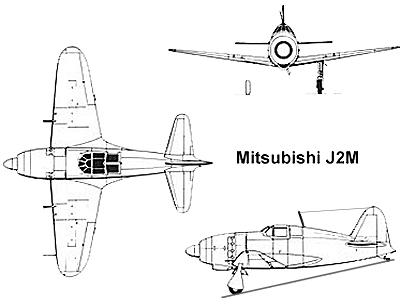 Mitsubishi J2M Raiden 3 View
Mitsubishi J2M Raiden 3 View
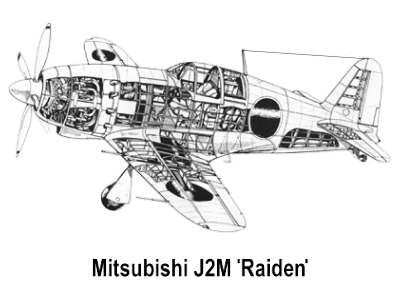 Mitsubishi J2M Raiden Cutaway
Mitsubishi J2M Raiden Cutaway
|
Specifications J2M:-
Country of Origin: Japan
Crew: 1
Length: 9.70 m (32 ft 8 in)
Wingspan: 10.80 m (35 ft 5 in)
Height: 3.81 m (13 ft 0 in)
Weight: Empty: 2,839 kg (6,259 lb) Loaded: 3,211 kg (7,080 lb)
Powerplant: 1 × One 1,850 hp Mitsubishi MK4R-A Kasei 23a 14-cylinder two-row radial engine, 1,379 kW (1,850 hp)
Performance:-
Maximum speed: 655 km/h (355kn or 407 mph)
Range: 560 km (302 nmi, 348 mi)
Service ceiling: 11,430 m (37,500 ft)
Rate of climb: 1 402 m/min (4,600 ft/min)
Weapons:-
4 × 20 mm Type 99-2 cannons in the wings, two in each wing, inboard guns having 190 rpg, outboard guns 210 rpg.
2 × 60 kg (132 lb) bombs or 2 × 200 L (53 US gal) drop tanks.
|
|
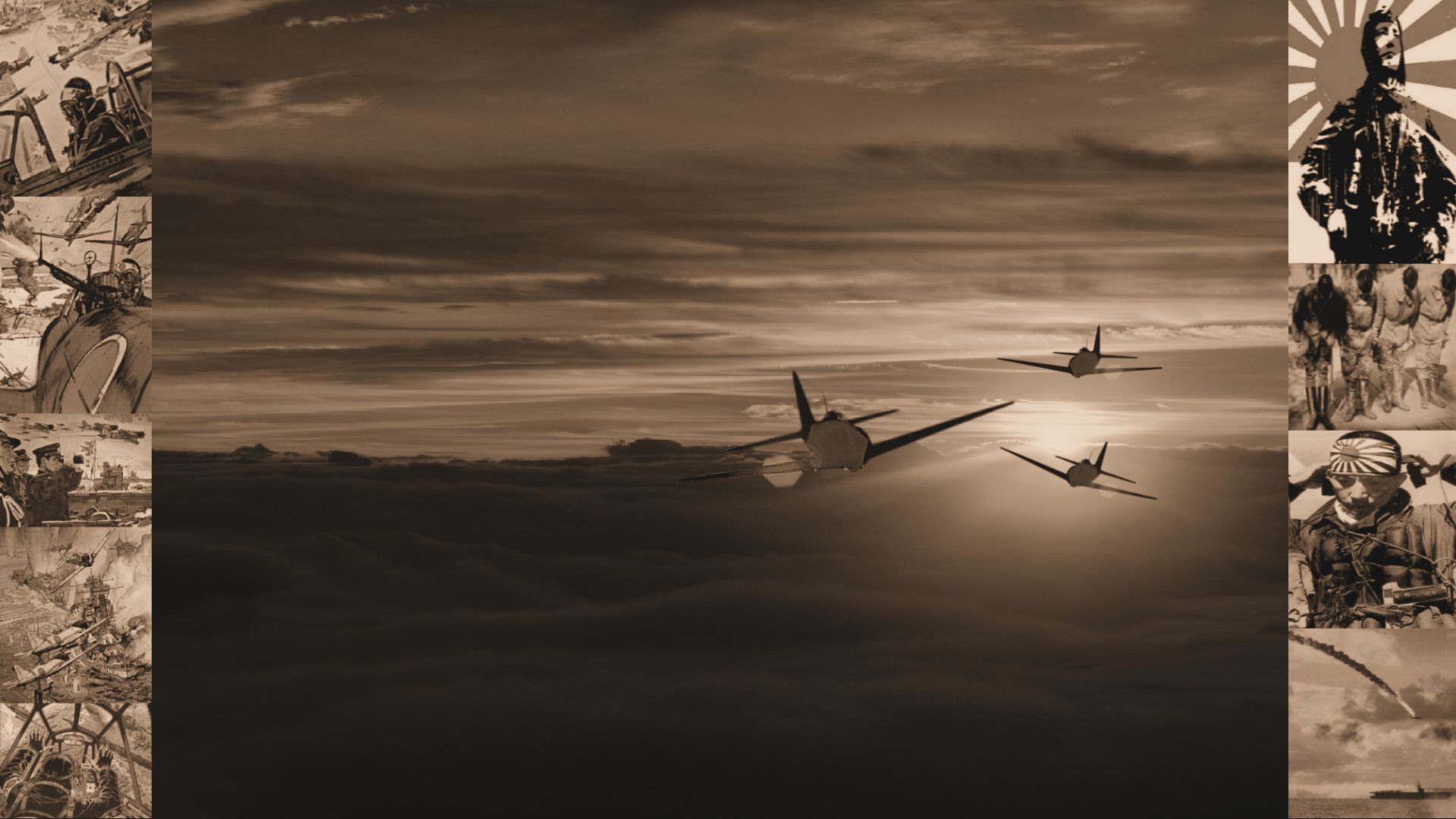



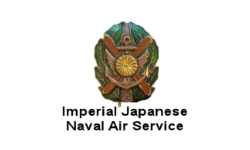
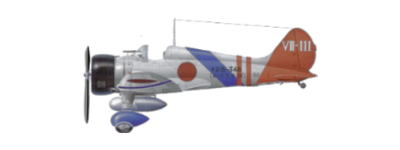 A5M
A5M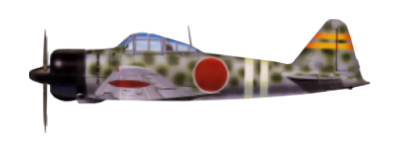 A6M Rei-sen
A6M Rei-sen N1K Shiden
N1K Shiden D3A
D3A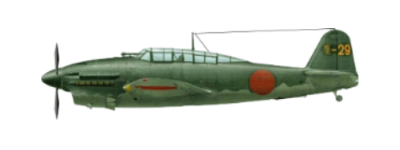 D4Y Suisei
D4Y Suisei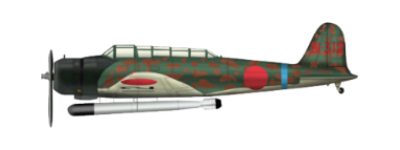 B5N
B5N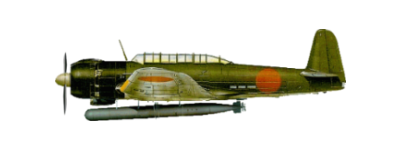 B6N Tenzan
B6N Tenzan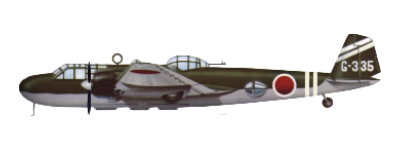 G3M
G3M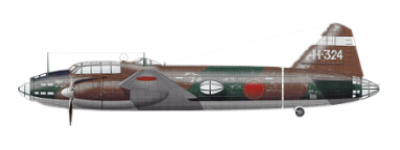 G4M
G4M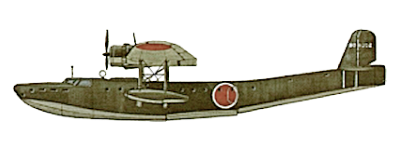 H6K
H6K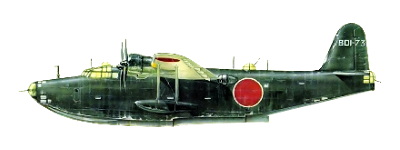 H8K
H8K
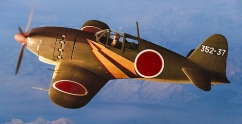

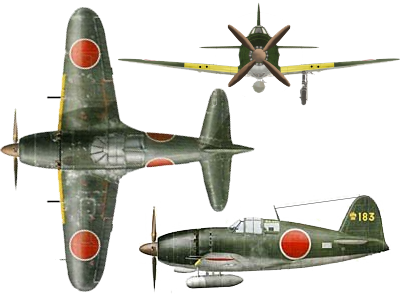
 Mitsubishi J2M 'Raiden'
Mitsubishi J2M 'Raiden'
